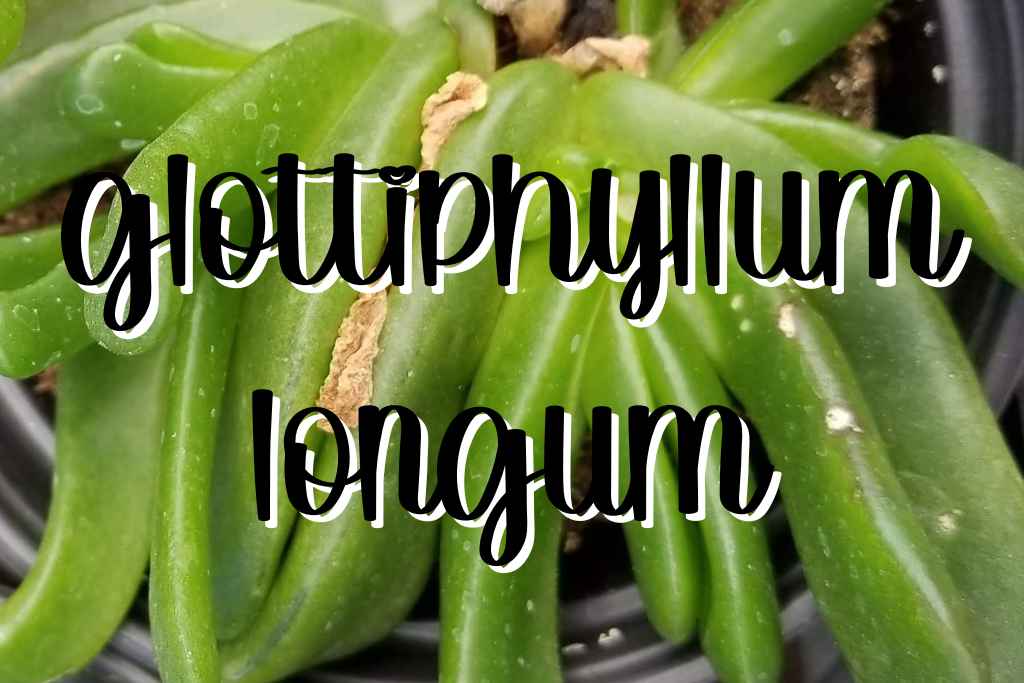Meet Glottiphyllum longum, a fascinating succulent plant native to South Africa. Part of the Aizoaceae family, this intriguing plant has a peculiar appearance that makes it a favorite among plant enthusiasts. In this comprehensive guide, we’ll explore everything there is to know about Glottiphyllum longum, from its unique features to its cultivation and care.
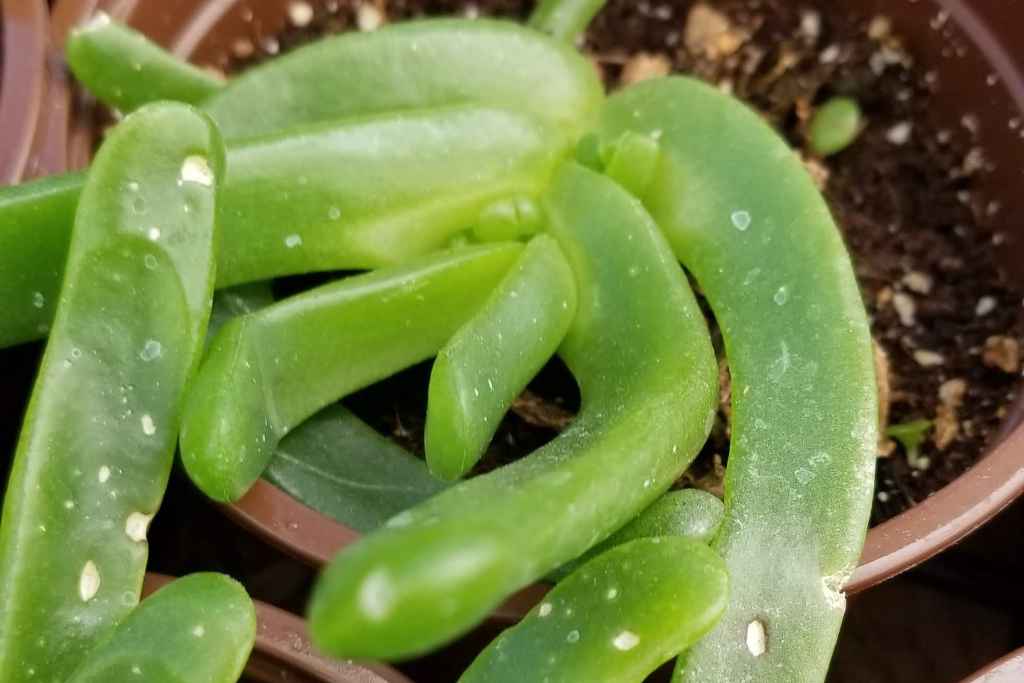
Dig in!
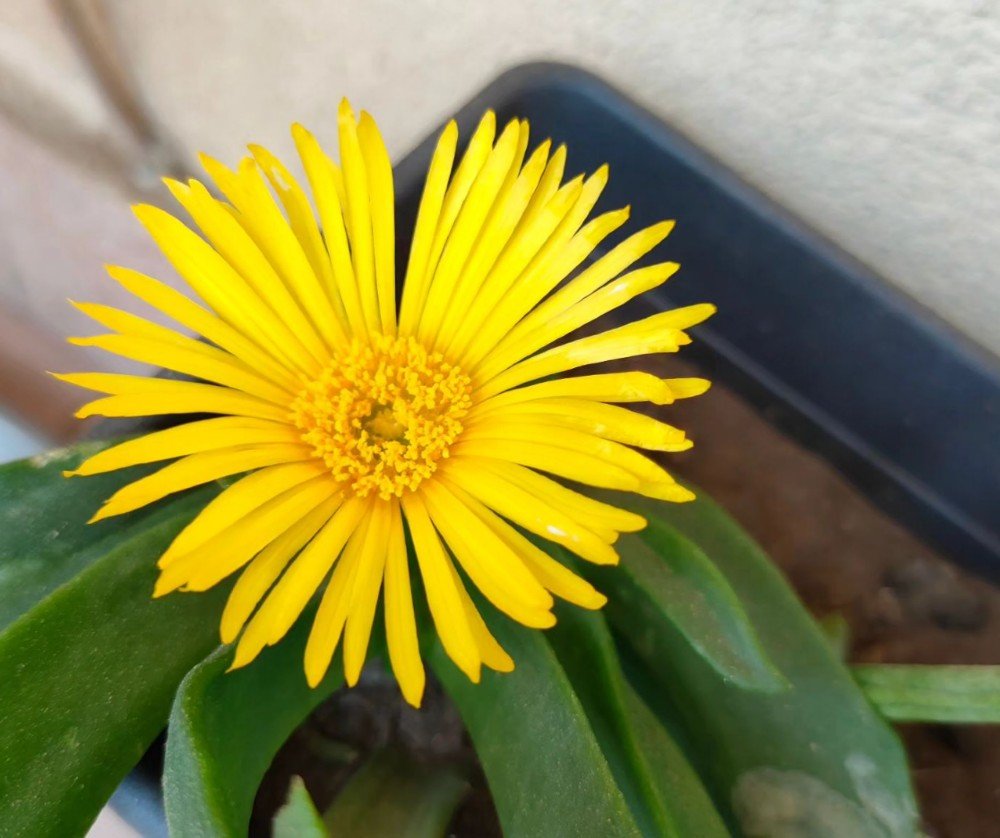
Habitat and Distribution
The Little Karoo
Glottiphyllum longum hails from the Little Karoo, a semi-desert region in the Western Cape of South Africa. This area is known for its rich biodiversity and unique plant life, making it a hotspot for botanists and plant lovers alike.
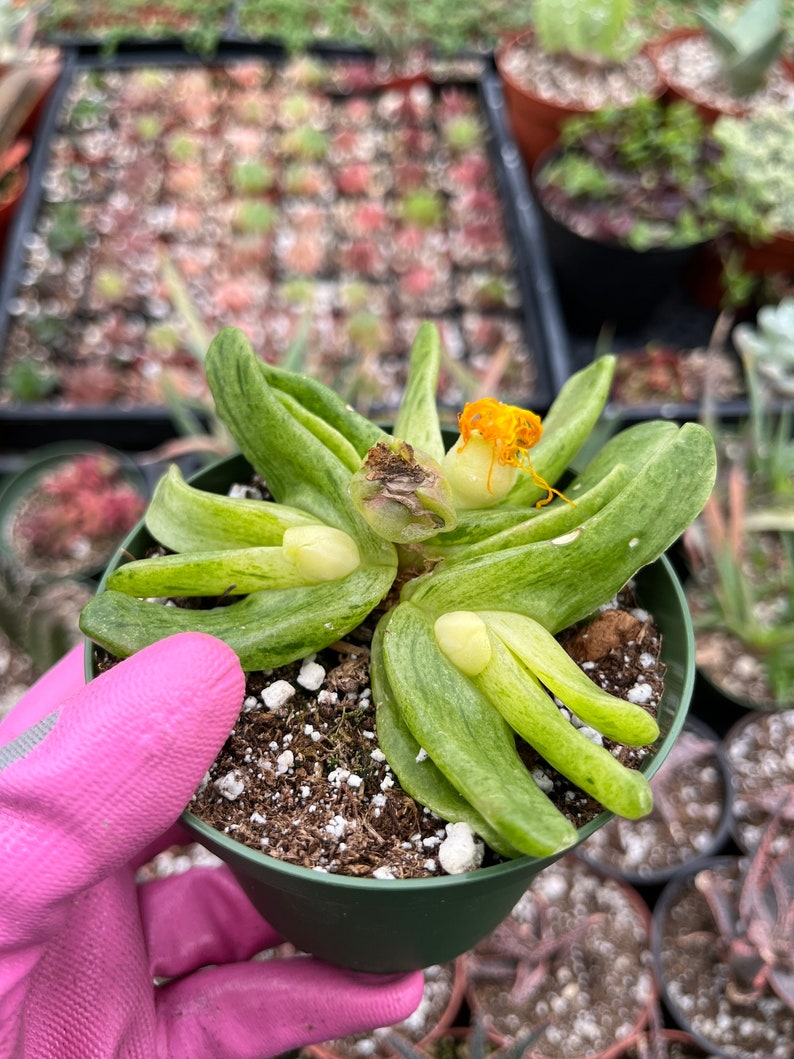
Source: Etsy
Weather conditions
This succulent thrives in the Little Karoo’s arid climate, where it endures both scorching hot summers and frosty winters. The plant’s ability to adapt to these extreme conditions is part of what makes it so captivating.
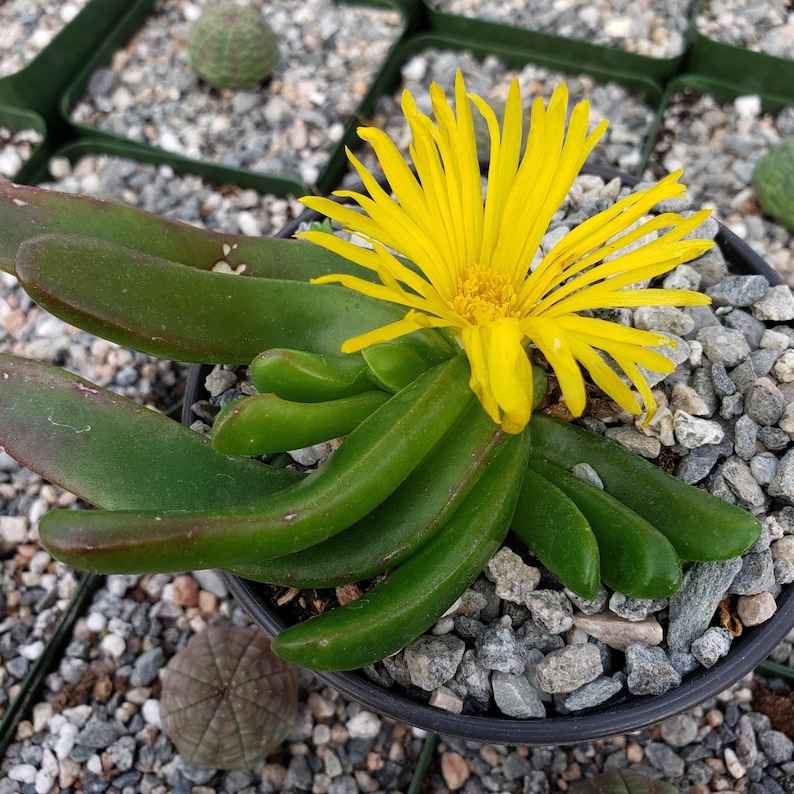
Source: Etsy
Physical Characteristics
Leaves
Glottiphyllum longum’s most notable feature is its fleshy, elongated leaves. They look like gummy worms to me! These leaves grow in pairs, with each pair overlapping the next to form a loosely shaped columnar structure. The leaves are green with a tinge of yellow or gray, and they’re covered in a fine powdery substance called “bloom.” This bloom helps protect the plant from harsh sunlight and prevents water loss.
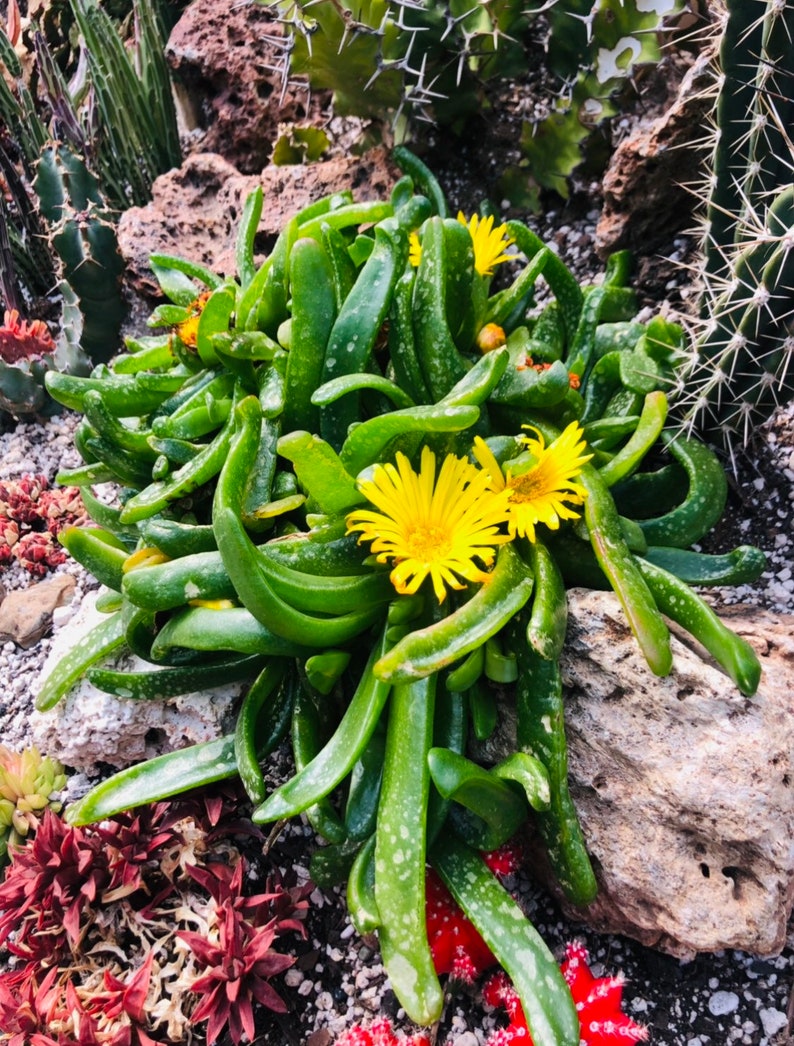
Source: Etsy
Flowers
The plant’s flowers are equally charming. They’re daisy-like, with bright yellow petals and a dark center, typically blooming in autumn. Though the flowers are short-lived, they create a stunning contrast against the plant’s foliage.

Source: Etsy
Fruits and seeds
After flowering, it produces small, capsule-like fruits containing numerous seeds. These seeds are dispersed by the wind or by hitching a ride on passing animals.

Source: Etsy
Growing Glottiphyllum longum
Soil requirements
To grow Glottiphyllum longum, you’ll need well-draining soil, ideally a mix of sand, perlite, and potting soil. The plant is sensitive to root rot, so it’s crucial to provide a growing medium that doesn’t hold excess water.

Source: Etsy
Watering
Like most succulents, Glottiphyllum longum is drought-tolerant and requires minimal watering. During the growing season, water the plant sparingly, allowing the soil to dry out between waterings. In winter, reduce watering frequency even further.
Sunlight and temperature
This succulent enjoys plenty of sunlight and can tolerate full sun for several hours a day. However, it’s important to protect the plant from intense afternoon sun, as it can cause the leaves to scorch. Glottiphyllum longum can also withstand cold temperatures but should be protected from frost.
Propagation
To propagate Glottiphyllum longum, you can either use seeds. Simply sow them in a well-draining soil mix and keep the medium moist until germination.
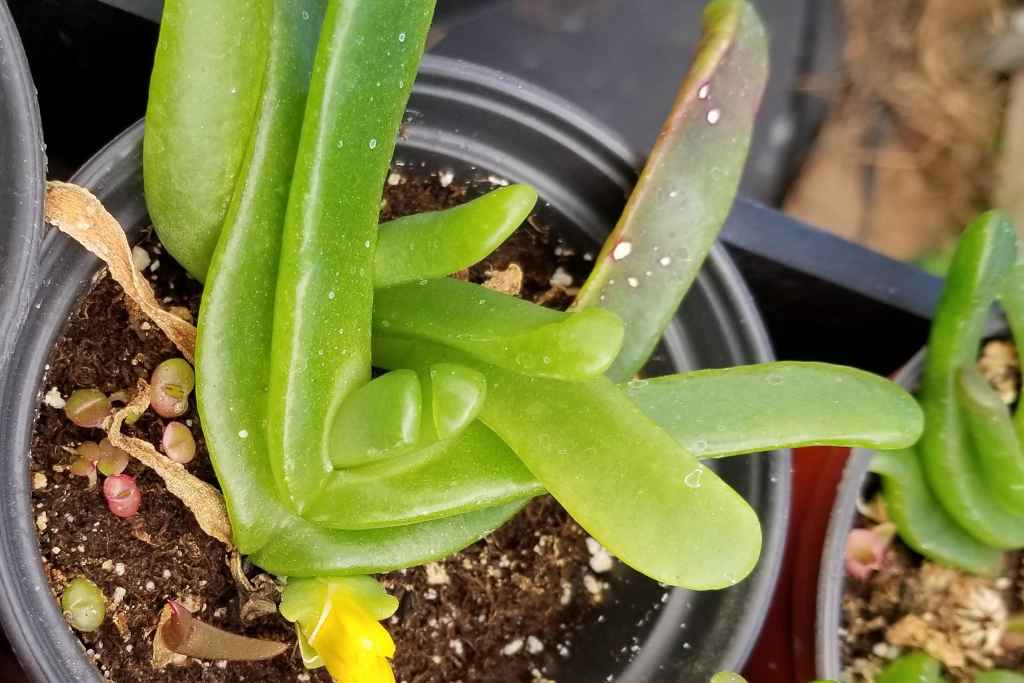
Pests and Diseases
Mealybugs
Glottiphyllum longum can fall victim to mealybugs, tiny insects that feed on the plant’s sap. These pests leave behind a cotton-like substance, which can lead to fungal infections. To control mealybugs, remove affected leaves and treat the plant with insecticidal soap.
Fungal infections
Too much moisture can cause fungal infections in Glottiphyllum longum. To prevent this, ensure the plant has proper drainage and avoid overwatering.
Uses and applications
Ornamental purposes
With its unusual leaf structure and vibrant flowers, Glottiphyllum longum makes for a visually striking addition to any garden or collection of potted plants. It’s particularly well-suited to rock gardens, where its intriguing form can be fully appreciated.
Traditional medicine
Although it isn’t widely used for medicinal purposes today, it has played a role in traditional South African medicine. The plant’s leaves were once used as a poultice to treat wounds, burns, and skin irritations.
Conservation and threats
While Glottiphyllum longum isn’t currently considered an endangered species, it faces potential threats from habitat loss and climate change. Conservation efforts are essential for ensuring the survival of this unique succulent and preserving the biodiversity of the Little Karoo region.
Fun facts about Glottiphyllum longum
- The genus name Glottiphyllum comes from the Greek words “glottis,” meaning “tongue,” and “phyllon,” meaning “leaf.” This is a nod to the plant’s tongue-like leaves.
- It is nicknamed the “tongue plant” due to the shape of its leaves.
- The vibrant yellow flowers are pollinated by beetles, which are attracted to the flowers’ sweet scent.
Glottiphyllum longum is a captivating succulent that offers both visual appeal and a fascinating backstory. With its unique appearance, intriguing growth habits, and relatively low-maintenance care requirements, it’s no wonder that this South African native has earned a place in the hearts of plant enthusiasts worldwide
FAQs
- Can Glottiphyllum longum be grown indoors?
Yes, Glottiphyllum longum can be grown indoors as long as it receives adequate sunlight and is planted in well-draining soil. - How often does Glottiphyllum longum flower?
It typically flowers in the autumn, though the exact timing may vary depending on growing conditions. - Is Glottiphyllum longum toxic to pets?
There is no evidence to suggest that it is toxic to pets, but it’s always best to keep plants out of reach of curious animals. - How fast does Glottiphyllum longum grow?
It is a relatively slow-growing succulent, taking several years to reach maturity. - What other plants are related to Glottiphyllum longum?
It is part of the Aizoaceae family, which includes other popular succulents like Lithops and Conophytum.

Where to Buy Succulents Online

